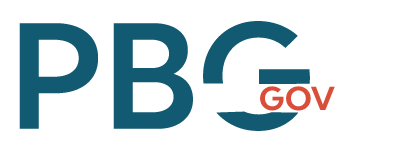Is Your Agency Truly Ready for Agile? How to Assess Public Sector Preparedness
The public expects our government to keep up with the needs of citizens with digital services and respond to change effectively in ever shorter timelines, all with limited resources. To meet these challenges, today’s government decision makers must be aware of the necessary changes they need to make to instill agility and flexibility in organizations, recognizing how current processes can hinder progress toward meeting those goals. Operating responsively and dynamically—from iterative, adaptive processes to supporting technology—is becoming critical to survival.
Traditional Work Processes: The Waterfall is a Deluge
The levees are breaking and the dam is spilling over in the world of government business process management. Yesterday’s waterfall methodology—the traditional and familiar sequential development process—can no longer keep up with the ever-increasing flow of demands from government agencies. But changing ways of working is like redirecting a river that is already spilling over its banks. To manage the seemingly unmanageable workflow and effect an enduring change in course, leaders and teams must understand what is driving the shift and believe in the value of making it.
“Cheaper, better, faster” is a well-known mantra in the private sector, but traditionally the public sector has not shared the same level of expectations or accountability as it does today. The federal government now finds itself competing with the private sector to deliver comparable customer service, quality, and turnaround time while being able to identify, address, and respond to threats.
To keep up, government agencies are starting to utilize private sector workflows. However, integrating these workflows into everyday work requires constant attention and leadership involvement to promote the long-term benefits. To gain control, agencies are slapping on the agile or SAFe (Scaled Agile Framework) methodology, often by mandate in the name of compliance, without truly adopting agile principles and practices. Going through the motions of standups and scrums does not make an agile workplace.
Critical Success Factors for Sustainable Agile Transformation
- Collaboration: The first step in your agile transformation is to think in terms of enterprise solutions instead of program solutions. Breaking down the silos across and within agencies means eliminating formal processes of engagement and fostering transparent teamwork. Start by identifying intersections and build a new foundation that fosters integration and alignment on roadmaps and timelines, visualizing a collective, cohesive future.
- Talent: Government competes with the private sector for experienced talent, and hiring can be a costly component of any agile transformation in order to support new technology and adhere to agile outcomes. Some personnel may have to perform multiple roles unless you can accommodate the additional headcount. A fast, informed, and strategic way to achieve your talent needs is working with a trusted partner in the field. Your partner can backfill gaps in skill sets, train and coach your current and new team members, and begin the needed cultural shift.
- Budget: There’s no question that agile costs more upfront, but you’ll experience savings downstream that can be reinvested in your overall IT infrastructure. Agile transformation creates avenues for finding efficiencies, realizing cost savings, and protecting against potentially devastating losses by reducing risks. These freed-up funds and resources can be repurposed to modernize and strengthen services, solutions, and skills.
The 3 Stages of Readiness: Your Roadmap for Success
Whether you are just starting on your agile journey or already working on your transition, you will need to navigate through the critical stages of readiness to ensure a successful and sustainable agile transformation. If you’re just getting started, you need to consider a change in mindset, both in how you work and how you budget for tools and resources:
- Do your teams understand why you need to transition to agile?
- Are you willing to make the investment in agile tools?
- Is your ecosystem able to handle the change?
An experienced partner can help you define and assess your readiness and determine where you are on your maturity roadmap so you don’t get derailed along your journey.
- Envision: Determine the desired outcomes for your future state and attach near- and long-term objectives to each. Buy, install, and resource accordingly to implement your objectives and maintain your agility moving forward.
- Execute: Business agility can be a slippery slope, and teams can be tempted to revert to the familiar and comfortable, especially as they encounter learning curves and unforeseen challenges along the way. Be vigilant in managing your direction, relying on your agile coaches to guide the way.
- Sustain: The road doesn’t end after implementation, although many clients question the need for ongoing support and continued investment. To make real change and mature your agile framework, you need to plan a roadmap for continuous improvement and recognize and reinforce the value of business agility, including:
- Lean Agile Centers of Excellence—Extend and formalize key critical roles, supported by coaching, training and certifications, and onboard new teams
- Agile Resources—Provide workshops, job aids, and other learning resources and activities.
- Metrics & Accountability—Establish metrics to measure maturity, building in accountability to monitor adoption and identify gaps.
In today’s rapidly changing world, agile transformation can no longer be characterized as an alternative approach to technology innovation and modernization. It is now a necessity for any public sector organization to deliver services to citizens effectively and efficiently while maintaining quality standards and meeting safety requirements. With an understanding of the components to readiness and the critical factors for success, public sector organizations can develop a sustainable implementation and reap the benefits of an agile transformation.
